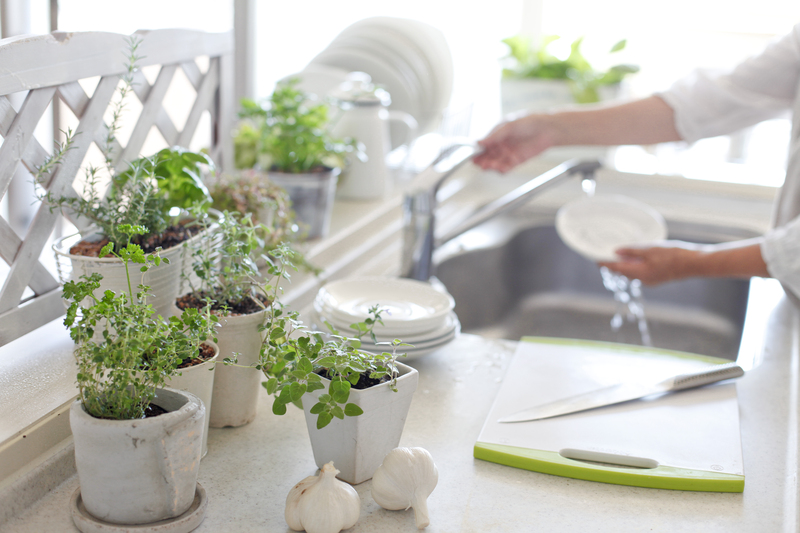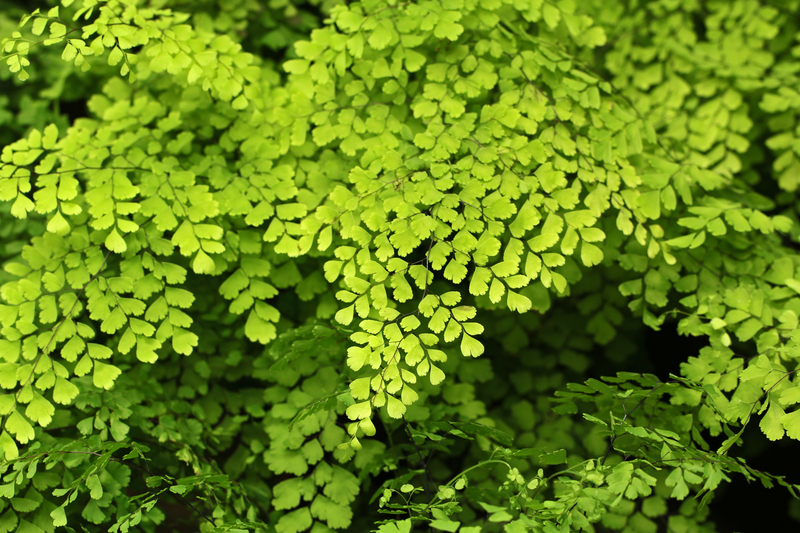Guide to Shield Your Plants from Winter's Chill
Posted on 19/08/2025
Guide to Shield Your Plants from Winter's Chill
Winter can be a challenging season for gardeners and plant enthusiasts alike. Freezing temperatures, chilling winds, and unpredictable frosts can leave your beloved greenery fragile and at risk. If you're searching for reliable ways to protect your plants during the cold months, you've come to the right place. This comprehensive guide to shield your plants from winter's chill offers proven tips and strategies to ensure your garden emerges from winter as lush and vibrant as ever.

Why Protecting Plants from Winter Cold Matters
Even the hardiest plants can succumb to the harsh effects of winter. Extended exposure to cold can damage roots, stunt growth, and even kill plants altogether. Understanding how to protect your plants from freezing weather is essential if you want to ensure their survival and health for the coming spring.
The Dangers of Winter Chill
- Frost Damage: Sudden drops in temperature can rupture plant cells, leaving leaves mushy and brown.
- Soil Freezing: Prolonged cold causes soil to freeze, cutting off roots' water supply.
- Wind Burn: Cold winds strip moisture from leaves and stems, causing desiccation.
- Root Stress: Fluctuating temperatures stress plant roots, reducing their ability to absorb nutrients.
Taking preemptive measures to protect your plants from winter's chill does more than keep them alive - it saves time, money, and heartache come spring.
Understanding Which Plants Need Protection
Not all plants are created equal when it comes to winter hardiness. To effectively shield your plants from winter's cold, it's important to identify which of your plants are most vulnerable.
- Tender Annuals: These plants (e.g., impatiens, tomatoes) cannot withstand frost or freezing temperatures and should be moved indoors or discarded after the season ends.
- Perennials: Some perennials, especially those not native to your region, may need extra protection.
- Evergreen Shrubs & Trees: Even evergreens can suffer from desiccation and sunscald during cold months.
- Potted Plants: Roots in containers are more exposed to the cold and are vulnerable to freezing.
Assessing Your Hardiness Zone
Use the USDA Hardiness Zone Map or a similar guide for your region to determine which plants can naturally withstand your local winter temperature extremes. Plants suited to your climate zone will require less intervention than those on the edge of their survival range.
Essential Steps to Prepare Your Garden for Winter
Preparing ahead of time is the key to protecting plants from winter's chill effectively. Follow these expert steps for a winter-ready garden:
1. Clean and Prune
- Remove dead or diseased foliage to prevent pest and disease problems over winter.
- Prune back perennials to reduce wind damage and deter overwintering pests.
- Do not prune woody plants late in fall, as this can encourage tender new growth that is easily damaged by frost.
2. Mulching: Nature's Blanket
Applying a thick layer of mulch is one of the most straightforward ways to provide winter plant protection. Mulch insulates the soil, moderates temperature fluctuations, and reduces water loss.
- Apply 2-4 inches of organic mulch (try straw, shredded bark, or compost) around your plants' base.
- Keep mulch from touching the stems of trees and shrubs to avoid rot.
- Potted plants benefit from mulch, too! Add mulch above the soil line to protect sensitive roots.
3. Water Wisely
- Water thoroughly before the first hard freeze, as moist soil retains heat better than dry soil.
- Reduce watering during winter, but be prepared to water evergreens during dry spells.
- Check containers regularly for dryness, as they can lose moisture quickly.
4. Protecting Young and Tender Plants
- Use plant covers, such as frost blankets, burlap, or old sheets, to shield vulnerable greenery from overnight frosts.
- For maximum insulation, create mini-greenhouses using clear plastic or cloches over prized specimens.
- Uncover plants during the day to prevent overheating and provide sunlight.
How to Shield Outdoor Plants from the Winter Cold
Windbreaks and Shelter
Chilly winds not only lower temperatures around your plants but also dry them out. Consider planting windbreaks of evergreens or installing temporary screens made from burlap, wood, or plastic mesh on the windward side of sensitive plantings.
- Position screens 1-2 feet from plants to allow airflow and minimize damage.
- Use stakes and ties to anchor windbreaks securely against winter gusts.
Row Covers and Cold Frames
Row covers are a gardener's secret weapon when it comes to winter plant protection. They create a microclimate, raising nighttime temperatures and shielding from frost.
- Cover beds with horticultural fleece, spunbond fabric, or plastic tunnels.
- For delicate seedlings, consider a cold frame--an enclosed, transparent structure that traps heat from the sun for daytime warmth and overnight protection.
Wrapping and Insulating Trees and Shrubs
Thin-barked trees (like maples and fruit trees) and evergreens can be especially vulnerable to winter injury. Wrapping trunks with commercial tree wrap or burlap can deter cracking and sunscald.
- Start wrapping at the base and work upwards, overlapping layers for extra coverage.
- Wrap from late autumn to early spring, removing material when temperatures warm.
Ensuring Success with Potted and Indoor Plants
Bringing Plants Indoors
If possible, relocate sensitive potted plants indoors before the first frost. Choose a space with adequate light and stable temperatures, such as a sunroom or east-facing window.
- Gradually acclimatize plants, first bringing them in at night, then extending their time indoors.
- Inspect for pests or diseases before moving plants inside, and treat as necessary.
- Indoor conditions can be dry; mist plants or run a humidifier to maintain adequate humidity.
Insulating Outdoor Pots
If you can't move containers indoors, protecting potted plants from winter's chill is vital. Container soil freezes faster than ground soil, increasing the risk of root damage.
- Group containers together in a sheltered area to conserve warmth.
- Wrap pots in bubble wrap, burlap, or even old blankets for extra insulation.
- Elevate pots off the ground to prevent direct contact with frozen surfaces.
Additional Tips for Winter Plant Protection
Anti-Desiccant Sprays
Evergreen shrubs and trees are especially prone to winter moisture loss. Anti-desiccant sprays create a protective coating, reducing water loss through leaves in cold, drying winds.
- Apply sprays on a mild, dry day, following package directions.
- Reapply through the winter as needed, especially after heavy rain or snow.
Snow as an Insulator
Believe it or not, a layer of snow can actually protect plants from extreme cold by acting as insulation.
- Allow snow to cover garden beds where possible, but avoid piling heavy, compacted snow that could break branches.
- Gently brush snow off evergreens and shrubs to avoid limb breakage.
Monitoring and Maintenance Through Winter
- Check staking and ties after storms - re-secure if needed to prevent damage from shifting winds or snow loads.
- Ventilate covered plants on sunny days to prevent overheating and mold.
- Keep an eye on soil moisture and add water during dry spells if the ground isn't frozen.

Frequently Asked Questions on Protecting Plants from Winter's Chill
1. When should I start preparing my garden for winter?
Begin preparations in late autumn, before the first frost. This timing gives you the chance to mulch, wrap, prune, and water plants as needed before cold weather sets in.
2. Can I use plastic covers to protect plants from frost?
Yes, but don't let the plastic touch foliage directly, as this can cause freeze damage. Use stakes or supports to keep plastic sheeting above plants and remove covers in the morning to allow for air flow and sunlight.
3. Is a thick layer of mulch always a good idea?
Absolutely - but too much mulch or mulch piled against stems can cause plant rot. Apply 2-4 inches, keeping space around trunks and crowns.
4. How do I know if my plant needs winter protection?
Check your plant's USDA hardiness zone recommendation. If your region typically gets colder than the plant's hardiness rating, or if temperature fluctuations are extreme, provide winter protection. Newly planted or recently relocated plants are especially vulnerable.
Conclusion: Your Winter Plant Shielding Strategy
With careful preparation and the right techniques, shielding your plants from winter's chill is entirely achievable. Whether you're safeguarding a beloved rose bush, ensuring your vegetable plot survives, or simply keeping your indoor plants healthy until spring, the steps outlined in this guide will set you up for success.
- Evaluate your garden and identify at-risk plants.
- Use mulch, covers, windbreaks, and other strategies to insulate and protect.
- Monitor conditions throughout the winter and maintain protections as necessary.
By implementing the strategies in this comprehensive guide to shielding your plants from winter's chill, you ensure a healthier, more vibrant garden ready to flourish once the warmth returns. Happy gardening!

